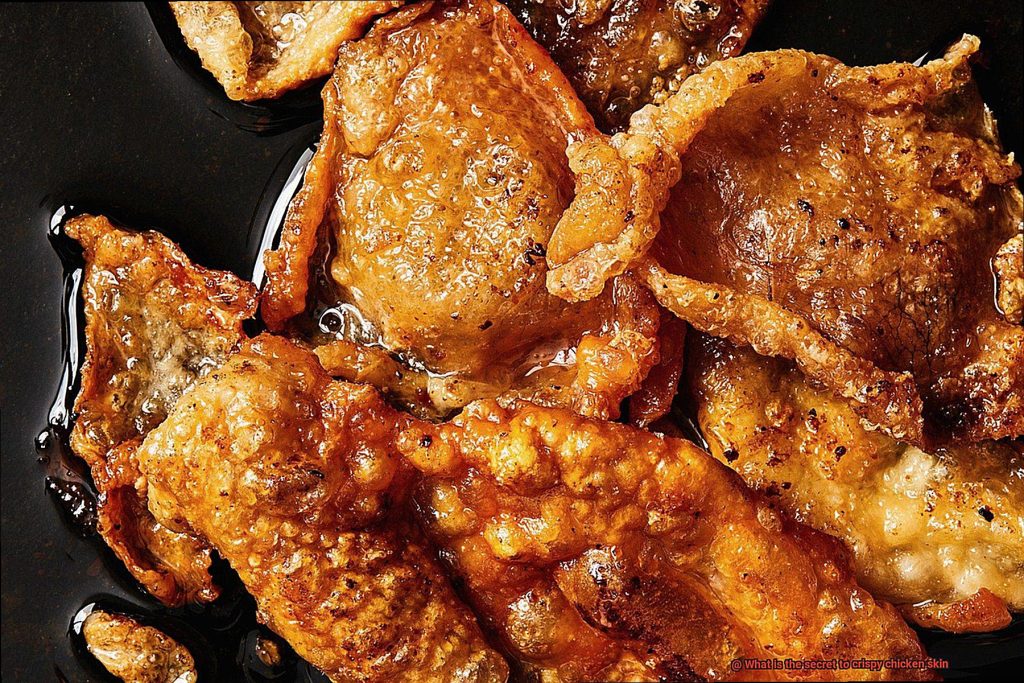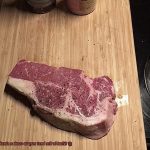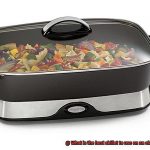Hey there, fellow foodies. Let’s talk about one of the most delicious parts of chicken: the crispy skin. There’s nothing quite like biting into a piece of juicy chicken with a perfectly golden-brown and crunchy exterior. It’s no wonder that many people consider it the best part of the bird.
But let’s be real, getting that perfect crunch can be a struggle. Fear not, though, because we’re here to spill all the secrets on how to achieve that coveted crispy chicken skin.
First things first: preparation is key. From selecting the right chicken to choosing the perfect cooking method, every step counts when it comes to achieving that mouth-watering texture and taste.
So get ready to take some notes as we guide you through all the tips and tricks for cooking up some seriously crispy chicken skin. We’ll cover everything from dry brining techniques to optimal cooking temperatures and more.
Grab your apron, oven mitts, and frying pans because we’re about to embark on a culinary journey like no other. Get those taste buds ready, folks – it’s time to cook up some crispy chicken perfection.
Contents
The Key to Crispy Chicken Skin: Dryness
The secret to achieving crispy chicken skin lies in one crucial factor: dryness.
Moisture is the mortal enemy of crispiness, which is why it’s essential to ensure that your chicken skin is as dry as possible before cooking. There are a few techniques you can use to achieve this.
Firstly, patting the chicken dry with paper towels is an excellent way to remove any excess moisture from the skin. Be sure to do this immediately before cooking, as even a small amount of moisture on the skin during cooking can prevent it from crisping up properly.
Alternatively, you can let your chicken air-dry in the fridge for a few hours or overnight. By doing this, any moisture on the surface of the skin will evaporate, resulting in a drier surface that crisps up easily during cooking.
For larger cuts of meat where it may be difficult to get into all the nooks and crannies with paper towels, some chefs recommend using a hairdryer on a low, cool setting to dry the chicken skin before cooking.
Once your chicken skin is dry, high heat is key for achieving that perfect crispy texture. Whether you’re grilling, baking or frying your chicken, make sure your pan or grill is hot before adding your chicken. This will kickstart the crisping process and give you that golden-brown skin you’re after.
Of course, seasoning is also important. A simple blend of salt, pepper, and paprika can enhance the flavor of the skin while promoting crispiness. For even more crunch, try adding a sprinkle of baking powder to your seasoning mix. This creates a chemical reaction that gives your chicken skin an extra boost of crispiness.

Air-Drying the Chicken for Maximum Crispiness
As a seasoned expert on this subject, I can tell you that air-drying is the secret to achieving maximum crispiness on your chicken. This simple process involves leaving the chicken uncovered in the refrigerator for a few hours or overnight before cooking.
To get started, pat your chicken dry with paper towels to remove any excess moisture on the surface. Then, place it on a wire rack set over a baking sheet and let it sit in the fridge, uncovered for at least 4 hours or overnight. This technique works best for whole chickens or pieces with skin on like thighs and drumsticks.
But why is air-drying so important? By removing excess moisture from the skin, it allows the chicken to crisp up during cooking instead of steaming. This leads to even cooking and deliciously crispy skin that will have your taste buds dancing.
In addition to achieving crispy skin, air-drying also helps with even cooking. When there is excess moisture on the surface of the chicken, it steams instead of crisping up during cooking. This can lead to unevenly cooked and soggy skin.
It’s essential to note that air-drying should not be confused with brining or marinating. While those techniques can also lead to delicious chicken, they do not contribute to crispy skin in the same way air-drying does.
High Heat for Perfectly Crispy Skin
The kind of skin that you hear crunching as you bite into it, with a golden-brown hue that’s hard to resist. But how do you achieve this culinary nirvana? It’s simple – high heat is the key ingredient to crispy skin.
You may be wondering, “Won’t cooking at high heat burn my chicken?” Not if you do it correctly. High heat is necessary to render the fat and create that crispy exterior we all crave. Whether you’re grilling, roasting, or frying your chicken, high heat is essential.
If you’re grilling your chicken, preheating your grill is crucial. Test the temperature by holding your hand about six inches above the grill grates. If you can only hold your hand there for a few seconds, the grill is hot enough. This will help ensure your chicken gets those beautiful grill marks and crispy skin.
When roasting in the oven, start with a high temperature for the first 10-15 minutes of cooking to help crisp up the skin. Then, lower the temperature to continue cooking until the chicken is fully cooked. This process creates that perfect combination of tender meat and crispy skin.
For those who prefer frying their chicken, make sure your oil is hot enough before adding your chicken. The ideal temperature for deep-frying chicken is between 350-375°F. Use a thermometer to check the temperature and adjust as needed. This will ensure the skin crisps up perfectly while keeping the meat juicy and tender.
Of course, cooking at high heat requires close monitoring to prevent burning or overcooking. But trust us when we say that it’s worth it for that irresistible, crunchy skin.
Pro tip: air-dry your chicken before cooking it for maximum crispiness. This means leaving it uncovered in the fridge for several hours or overnight before cooking. The drier the skin, the crispier it’ll get.
Don’t Overcook Your Chicken
Crispy chicken skin is the ultimate goal for any chicken dish, but achieving that perfect crunchy texture can be a daunting task. One of the biggest mistakes that people make when trying to achieve crispy skin is overcooking their chicken. Overcooking causes the skin to dry out, resulting in a tough and chewy texture rather than the desired crispy texture. But don’t worry, we’ve got you covered with some expert tips.
Firstly, it’s crucial to use a meat thermometer to ensure that your chicken is fully cooked without being overcooked. The internal temperature of your chicken should reach 165°F to be considered safe for consumption. By monitoring the temperature closely, you can achieve juicy, flavorful meat with perfectly crispy skin.
But that’s not all – letting your chicken rest after cooking is just as important. Allowing the juices to redistribute throughout the meat helps keep the skin crispy while preventing it from becoming soggy. So, give your chicken a few minutes to rest before digging in.
In addition to using a meat thermometer and letting your chicken rest, it’s essential to use high heat when cooking chicken to achieve that perfect crispiness. High heat ensures that the skin crisps up nicely and doesn’t become soggy. On the other hand, low heat can result in steaming rather than frying the skin, which won’t create the desired texture.
Lastly, overcrowding the pan or grill when cooking chicken can cause the skin to become soft and soggy rather than crispy. So make sure you give each piece of chicken enough space to cook evenly.
Seasoning for Enhanced Flavor and Crispiness

Look no further than the power of seasoning. As an expert, I’m here to give you the inside scoop on how to spice up your chicken game with enhanced flavor and crispiness.
To achieve perfectly crispy skin, the right blend of herbs and spices is crucial. Classic seasoning blends for chicken include garlic, onion, paprika, cumin, and thyme. These bold flavors can stand up to high heat and will make your taste buds dance with joy. But don’t forget about the most important ingredient of all – salt. Salt draws out moisture from the skin, which is key to achieving that crispy texture we all crave.
Once you’ve chosen your seasoning blend, it’s important to apply it evenly over the entire surface of the chicken. Don’t forget to get under any flaps or folds of skin to ensure even distribution. As a general rule of thumb, use about 1 tablespoon of seasoning per pound of chicken.
But be warned – a rub or marinade can burn easily on the grill. Keep a close eye on your grill temperature and adjust as necessary. You may also want to consider using indirect grilling methods or a combination of direct and indirect heat.
In addition to classic seasoning blends, there are plenty of other ways to spice up your chicken game. Consider adding a pinch of smoked paprika for a smoky flavor, or try mixing in some citrus zest for a tangy kick. And don’t forget about fresh herbs like rosemary or thyme – they add a burst of freshness that will take your chicken to the next level.
Using Baking Powder for Extra Crunch
Look no further than baking powder to achieve that irresistible crunch you’ve been dreaming of. As a seasoning expert, I have compiled the ultimate guide to using baking powder for extra crispy chicken skin.
The key to success is all in the application. It’s important to apply baking powder evenly and sparingly – too much can result in a bitter taste and uneven texture. A good rule of thumb is to use 1-2 teaspoons of baking powder per pound of chicken.
To start, pat your chicken skin dry with paper towels to remove any moisture. Then, sprinkle the baking powder over the chicken skin and rub it in gently with your hands, making sure every inch of the skin is coated evenly. Let the chicken rest for at least 30 minutes before cooking, allowing the baking powder to work its magic.
When it comes time to cook your chicken, high heat is key to achieving that perfect crispy texture. Whether you’re grilling or roasting your bird, be sure to keep an eye on it and rotate it as needed for even cooking.
But wait, there’s more. Here are some additional tips and tricks for achieving extra crunch with baking powder:
- For an extra kick of flavor, mix your baking powder with other seasonings like paprika or garlic powder before applying it to your chicken.
- Try using baking powder on other meats like pork or fish for an added crunch.
- If you really want to up your game, try double-frying your chicken after applying the baking powder for ultimate crispiness.
Tips and Tricks for Crispy Chicken Skin
Crispy chicken skin is the holy grail of chicken cooking. Achieving that perfect crunch can be a challenge, but with these five tips and tricks, you’ll be able to achieve crispy chicken skin every time.
Dry it out
Moisture is the enemy of crispy skin. Pat the chicken dry with paper towels before seasoning and cooking to remove any excess moisture.
Turn up the heat
Cooking the chicken over high heat will help sear the skin, creating a crispy texture. Avoid moving the chicken too much while cooking to prevent the skin from sticking and tearing.
Season like a pro
Seasoning is key when it comes to crispy chicken skin. Use generous amounts of salt, pepper, and other spices and herbs to enhance flavor and draw out any remaining moisture from the skin.
Bring it to room temperature
Allowing the chicken to come to room temperature before cooking ensures even cooking and allows the skin to crisp up better when exposed to high heat.
Rest it well
Letting the chicken rest for a few minutes after cooking is essential. This allows the juices to redistribute throughout the meat and prevents steam from getting trapped under the skin, ensuring that it remains crispy.
flHWNr9G5KM” >
Conclusion
In conclusion, the quest for crispy chicken skin is not a simple one. It requires attention to detail and a few key techniques to achieve perfection. The secret lies in ensuring that the skin is as dry as possible before cooking, whether it’s through patting it dry with paper towels or air-drying it in the fridge. High heat is also crucial for achieving that golden-brown crunch, whether you’re grilling, roasting, or frying your chicken.
But seasoning is where the magic happens. Classic blends like garlic, onion, paprika, cumin, and thyme are great choices, but don’t forget about the power of salt to draw out moisture from the skin. And for an extra boost of crunchiness, try adding a sprinkle of baking powder to your seasoning mix.
Don’t overlook the importance of proper cooking and resting times either. Overcooking can lead to dry chicken while not letting it rest after cooking can result in unevenly distributed juices. Finally, overcrowding your pan or grill when cooking chicken can cause the skin to become soft and soggy rather than crispy.
By following these tips and tricks for achieving crispy chicken skin, you’ll be able to create mouth-watering dishes that will leave everyone asking for seconds.






